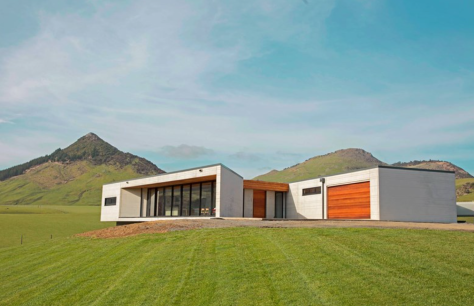Editor’s Note: This is another weekly column in the Wanganui Chronicle.
“I don’t see a punch, I just see a fist in the face.”
With those words, Nigel Owens has created a meme that I hope will stand the test of time, and one worthy of such an outstanding rugby referee and human being.
I could easily write an entire column about him, but that’s not my niche here in the Weekend section. I write about housing, which has a whole set of memes unto itself. So instead of writing about the outstanding Welshman I’ll write about memes and houses.
According to Wikipedia, a meme is: “an idea, behavior, or style that spreads from person to person within a culture” (Merriam-Webster Dictionary). A meme acts as a unit for carrying cultural ideas, symbols, or practices that can be transmitted from one mind to another through writing, speech, gestures, rituals, or other imitable phenomena with a mimicked theme.
The most popular memes that most of us are familiar with come in the form of catchphrases – think “Nek minnit” popularized by New Zealand skateboarder Levi Hawken.
Owen’s comment on the mild collision between the fist of French number eight Louis Picamoles and the face of All Blacks skipper Richie McCaw is just another way of saying “it’s a matter of degree,” but I think it’s an important reminder that life and architecture are all just matters of degree. It’s also a reminder that limits will always be pushed and we need impartial referees.
When it comes to designing homes, there can be a considerable amount of “pushing with a fist” rather than outright punching. In other words, architects and designers frequently push the lower limits of the Building Code Claus H1 – Energy Efficiency. There are various ways in which this is done, but at every turn a building control officer acts as referee.
When the limits of the rulebook on energy efficiency are pushed there can be three outcomes: red card, yellow card, or no penalty. Since building officers strive to be helpful with building professionals a common outcome is a yellow card, which simply means that the plan does not comply and that certain aspects should be reviewed before resubmitting. While this is nothing like being sent to the sin bin or being penalised, it is like a yellow card in that it provides time for reflection before rejoining the game. Needless to say, most architects hate this.
A great example of how Claus H1 can be pushed to its limit was illustrated in the Grand Designs NZ premier episode in which Southland farmer Lachlan McDonald builds his modernist concrete home in…Southland. 
From my perspective, it is hard to see how the design was signed off by a consenting officer, but somehow it was. I suspect there was a bit of pushing with a fist going on behind the scenes.
As a huge fan of Kevin McCloud and the original Grand Designs, I noticed a striking contrast in cultural memes in the first episode of the Kiwi version with its host Chris Moller. The most glaring contrast is that McCloud would have said something like, “Building in concrete has a huge carbon footprint.” Instead there was no mention.
We can also be sure that McCloud would have made mention of any and all green aspects to the building or lack thereof, with special emphasis on the extraordinary quality of the high performance windows which would have been custom made somewhere in Belgium and shipped to England with a team of expert installers. These types of comments were absent from Episode 1, and I suspect that the energy performance of the windows was best left unmentioned.
To be fair, Grand Designs has been going for 16 years in England and the cultural memes around housing are very different there. I read a report recently describing the New Zealand building industry as a decade behind Europe. From what I see on TV, that’d be about right.
The good news is that we have great role models to follow in McCloud and the English building code. Its just a matter of how fast we get there as a culture.
Anyone heard of pushing on a string?
Peace, Estwing


Brilliant perception, well written!
chur
Yes I’m enjoying the show, but there’s little to no talk about performance. Too much about aesthetics, views, budgets & deadlines.
agreed